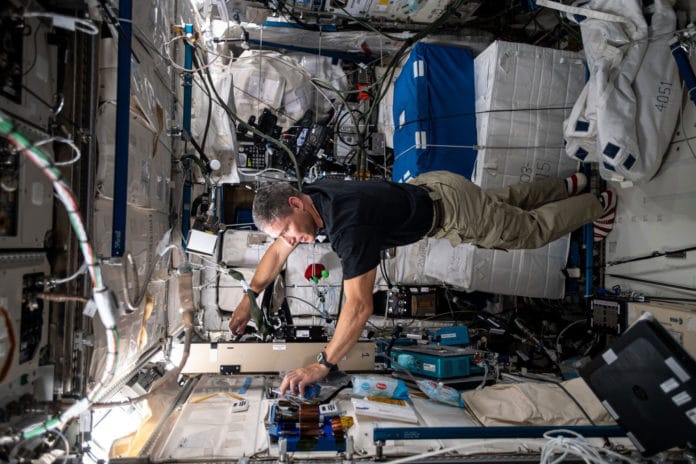In microgravity, the human body loses its cues for up and down and requires adjustments to move and manipulate objects.
Scientists are studying the extent of this adjustment through the Grip experiment. The Grip experiment studies how the central nervous system controls movement and the force astronauts use to manipulate objects with their hands.
Grip experiment, being set up in this image by NASA astronaut Mike Hopkins onboard the International Space Station.
Commissioned by ESA astronaut Thomas Pesquet in 2016, Grip was performed by both Alexander Gerst (2018) and Luca Parmitano (2019) during their Horizons and Beyond missions. Mike and his fellow NASA astronaut Victor Glover are next to participate.
During every session, Mike and Victor will hold an object furnished with measuring instruments between their right thumb and index finger and conduct a range of recommended movements.
Before conducting the experiment on Space Station, the Grip experiment was performed on 20 parabolic flight campaigns. Their results suggested that short-term exposure to microgravity induces subtle changes in how the forces used in gripping an object are coordinated.
The experiments also reveal that our brains anticipate Earth’s gravity‘s effects even when it is not there.
The experiment’s results will help scientists determining potential hazards for astronauts as they move between different gravitational environments. It could also improve the design of haptic interfaces used during deep space missions to the Moon and Mars.
